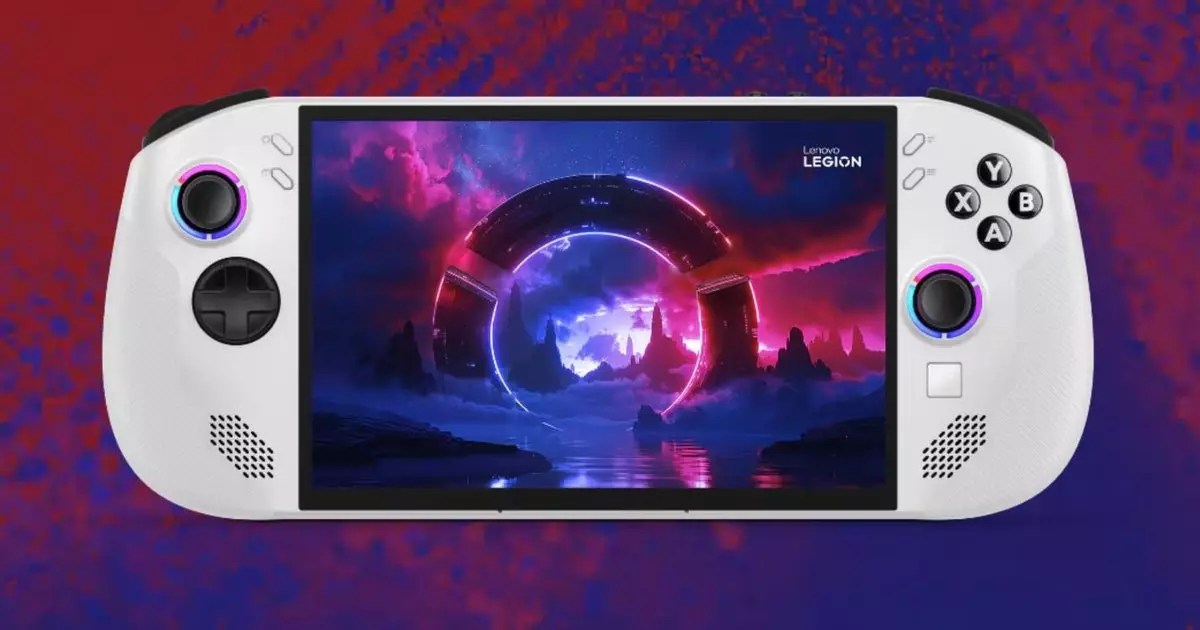As the gaming market continues to evolve, Lenovo is stepping up its game with the introduction of the Legion Go S. This novel device marks a significant departure from its predecessor, the Legion Go, by eliminating detachable controls in favor of a more conventional fixed chassis design. While the initial reaction may stem from a hint of nostalgia regarding the removed features, the Legion Go S introduces several exciting updates that could redefine portable gaming.
The Legion Go S presents a compact and lightweight alternative to Lenovo’s original offering, with its weight reduced from 854g to a more manageable 730g. This change not only enhances portability but also boosts the comfort of extended gaming sessions. The new model employs an 8-inch, 1200p, 120Hz IPS display, which offers a crisp image while likely being easier for the device’s processor to handle compared to its predecessor’s larger, more demanding screen. This balance between performance and visual fidelity is crucial in handheld devices, where power consumption must be carefully managed.
For its internal hardware, users have the option to choose between the Ryzen Z1 Extreme and AMD’s latest Ryzen Z2 Go processors. The initial price of $729 for the more powerful variant raises questions about its real-world performance compared to the newly introduced chip. Meanwhile, the Ryzen Z2 Go model is set to retail at the more budget-friendly price of $599. The strategic pricing reflects Lenovo’s intent to cater to diverse audiences, from hardcore gamers willing to invest in the top specs to casual gamers looking for a more economical choice.
One of the standout features of the Legion Go S is its integration of SteamOS, which marks a historic moment as the first officially licensed handheld outside Valve’s Steam Deck family. In the competitive landscape of gaming handhelds, the choice of an optimized operating system makes a substantial difference in user experience. Unlike Windows 11, which often struggles with small-form factors, SteamOS is specifically designed to enhance mobile gameplay. While users can still access a Desktop Mode for familiarity with Windows-like environments, the inherent connectivity with Steam’s ecosystem bodes well for a seamless gaming experience.
Lenovo’s decision to prioritize SteamOS could potentially offer a competitive edge over other handheld devices that rely on traditional operating systems. The user interface tailored for handhelds makes navigating through libraries and launching games much more intuitive, creating a sense of fluidity that can often be lacking in systems burdened with outdated software structures.
Despite some sacrifices in design, such as the removal of the original detachable controllers, the Legion Go S compensates with new and refined features. Equipped with Hall Effect joysticks and a small trackpad, the usability of the device seems carefully considered. The trackpad, which is less gaming-specific than those found on other devices, may serve as a convenient navigation tool rather than a full replacement for traditional control schemes. It encourages versatility without compromising the core gaming experience.
The introduction of a 55Whr battery, which surpasses the original model’s by 5Wh, hints at Lenovo’s commitment to longevity, one of the main criticisms directed at its forerunner. A combination of a less demanding display and more efficient hardware could lead to significantly improved battery life, a crucial feature for gamers who often find themselves on the go.
As Lenovo prepares for the launch of the Legion Go S in early 2024, it’s clear that this handheld is being meticulously designed to meet modern gaming demands. While the device will still need to prove itself in performance benchmarks and daily usability stakes, the early indications suggest a device that honors the past while leaning into the future. At its competitive price points and with its superior operating system, the Legion Go S is poised to capture the attention of a broad gaming audience. The skepticism surrounding its success is natural, but with the right execution, it offers an intriguing alternative to traditional gaming systems and compounds the exciting landscape of portable gaming.


Leave a Reply